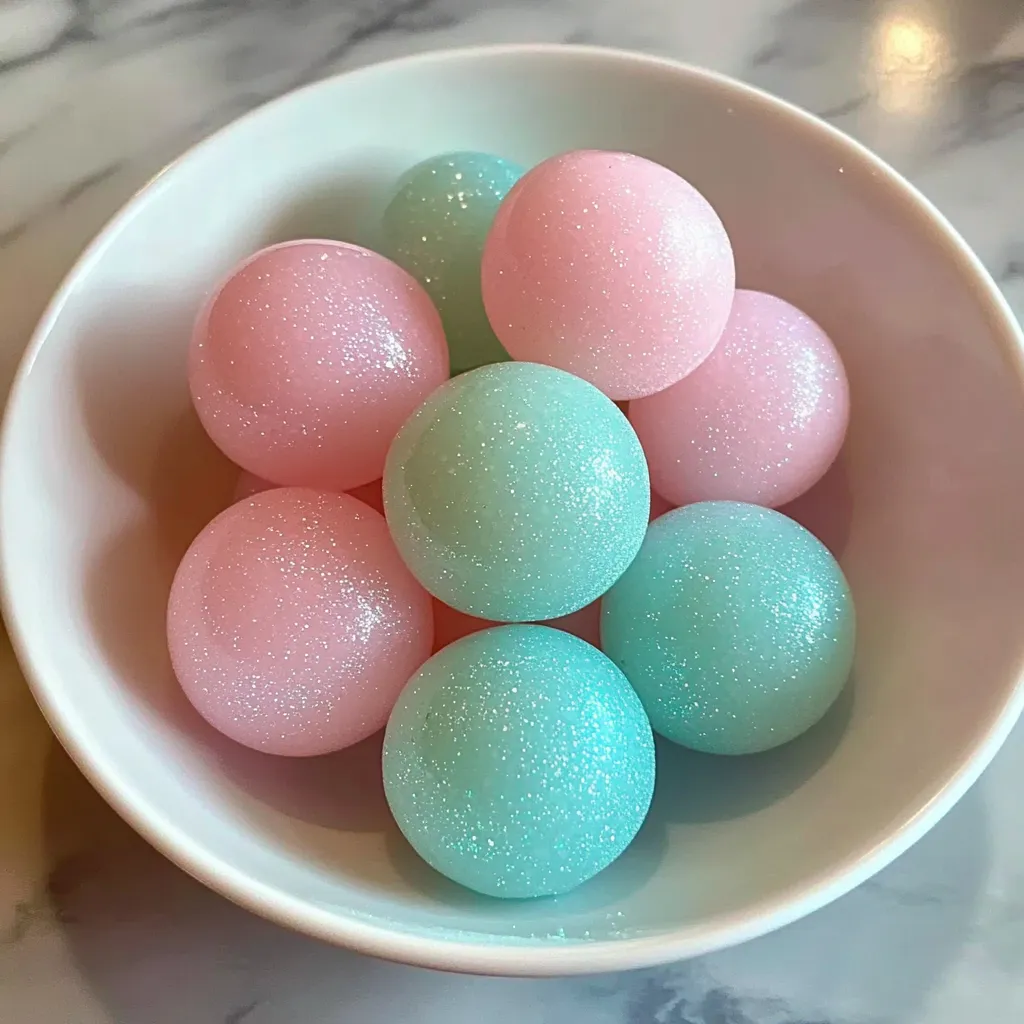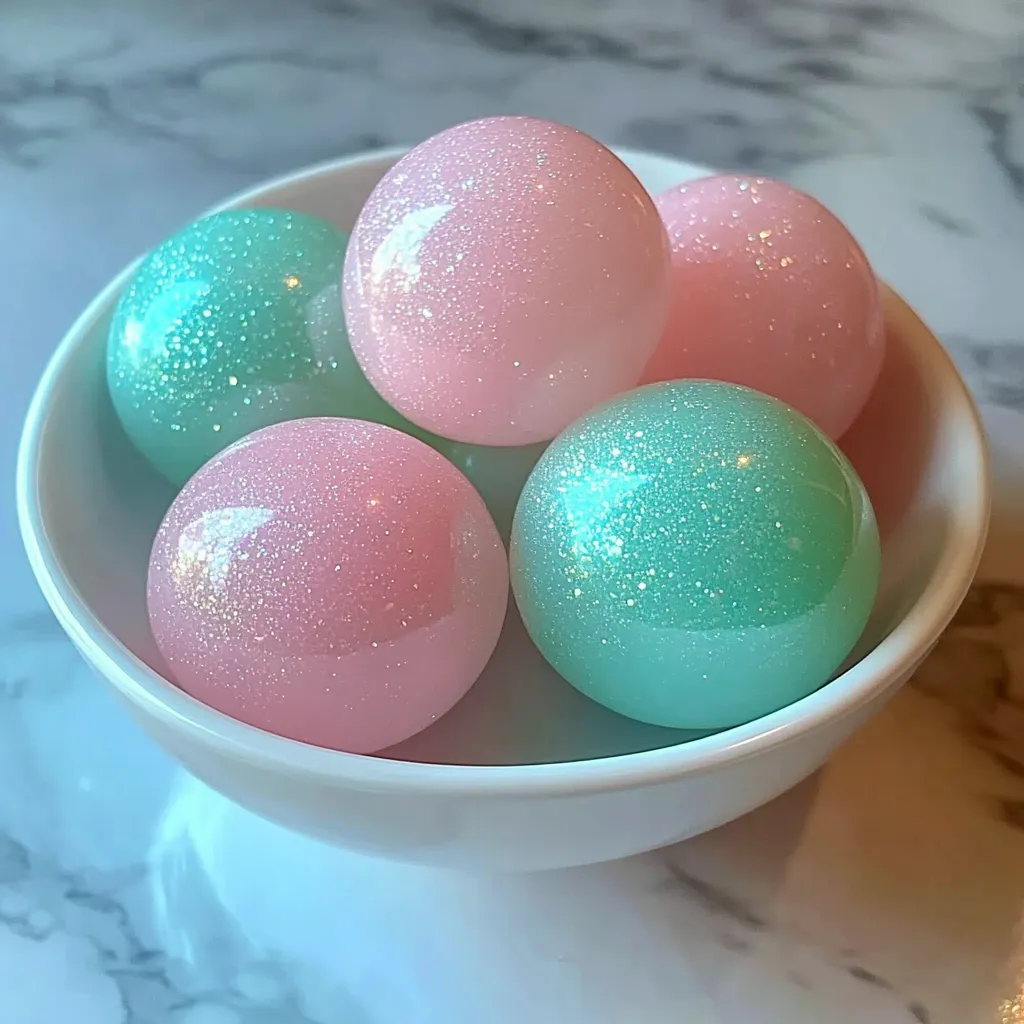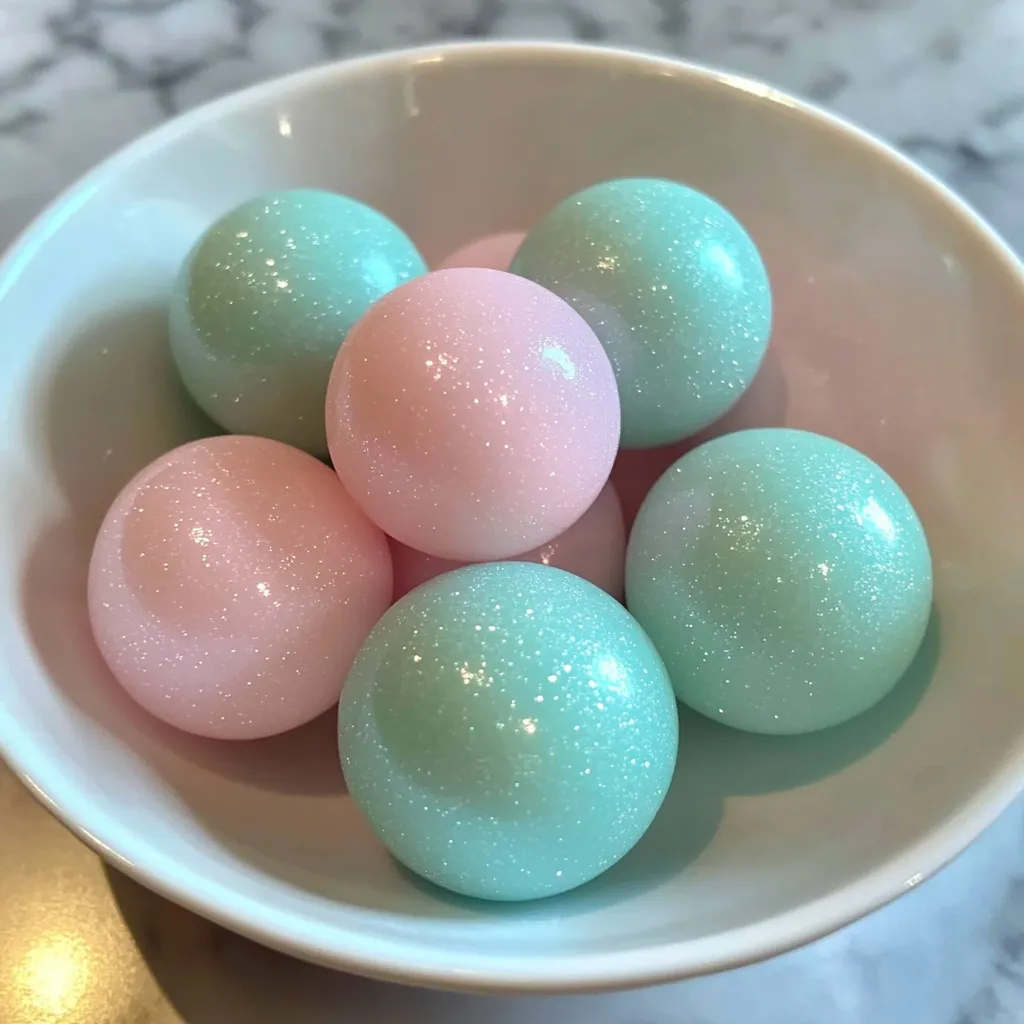 Pin it
Pin it
Crafting homemade bubble gum transforms ordinary kitchen ingredients into colorful, chewy treats that rival store-bought varieties. This entertaining kitchen project combines simple ingredients like gum base, corn syrup, and powdered sugar to create customizable candy that brings out childlike joy in everyone. My family discovered this recipe during a particularly rainy weekend, and it quickly became our go-to activity whenever the kids announce they're bored.
The first time we attempted this recipe, my kitchen looked like a powdered sugar explosion had occurred. Despite the mess, watching my children's faces light up when they blew their first bubbles with gum they made themselves made every sticky fingerprint worthwhile. Now we spread newspaper everywhere before starting, and the cleanup has become much more manageable.
Essential Components
- Premium gum base: This foundational ingredient provides the characteristic stretch and chew factor; look for food-grade options from specialty baking suppliers
- Light corn syrup: Acts as both sweetener and binding agent, creating the perfect consistency that prevents the gum from becoming brittle
- Superfine powdered sugar: Incorporates smoothly into the mixture while reducing stickiness; regular granulated sugar simply won't achieve the right texture
- Citric acid crystals: Optional but recommended for adding that characteristic tangy note found in commercial bubble gums
- Concentrated flavor oils: Food-grade essential oils designed specifically for candy making deliver much more authentic flavor than extracts
- Gel food coloring: Provides vibrant color without adding excess liquid that could affect the gum consistency
I learned the hard way that quality matters with these ingredients. My first attempt used regular food extracts instead of candy flavoring oils, resulting in gum that tasted wonderful for about five minutes before becoming completely flavorless. The specialized candy flavoring oils maintain their taste profile much longer during chewing.
Bubblegum Workshop
- Prepare Your Workspace:
- Cover your countertop with parchment paper and have all ingredients measured before beginning. Place a small bowl of vegetable oil nearby to keep your hands greased, as this prevents the mixture from sticking to your fingers. Wear an apron or clothes you don't mind getting messy, as this process can get quite colorful.
- Create The Base:
- Place gum base in a microwave-safe glass bowl and heat in 30-second intervals, stirring between each until completely melted. The texture should resemble thick honey when properly melted. Be patient with this step; rushing can result in overheating and a ruined batch.
- Blend The Sweeteners:
- Pour corn syrup into the melted gum base and stir vigorously until fully integrated. The mixture will become increasingly difficult to stir as it cools, so work quickly but thoroughly. This combination creates the perfect balance of sweetness and chewability.
- Add Personality:
- Divide the mixture if you want multiple colors or flavors. Working with one portion at a time, add 3-5 drops of food coloring and 5-8 drops of flavoring oil, folding together until evenly distributed. Remember that flavors intensify during the kneading process, so start conservatively.
- Transform With Texture:
- Generously dust your work surface with powdered sugar and pour the sticky mixture onto it. Begin kneading like bread dough, continuously incorporating powdered sugar until the gum loses its stickiness and becomes smooth and pliable. This typically takes 5-7 minutes of consistent kneading.
- Shape Your Creation:
- Once the desired consistency is reached, shape your gum into small balls, strips, or press into candy molds for fancy shapes. For a professional touch, roll finished pieces in a light coating of powdered sugar to prevent sticking when stored.
 Pin it
Pin it
My son has sensitivities to artificial colors, which initially sparked our interest in making homemade bubble gum. We experimented with natural colorings like beet powder for pink, turmeric for yellow, and spirulina for blue-green hues. While not as vibrant as their artificial counterparts, these natural alternatives created beautiful pastel colors without triggering his reactions. The homemade version also allowed us to control the sweetness level, creating a less sugary option that still satisfied his candy cravings.
Sweet Presentation
Wrap individual pieces in small squares of waxed paper with twisted ends for that authentic candy look. For gifts, place assorted pieces in small cellophane bags tied with colorful ribbon. Create a candy shop experience by displaying different flavors in glass jars with scoops. During birthday parties, we set up a "bubble gum factory" station where guests create personal flavor combinations and take home their creations as party favors.
Flavor Exploration
Create fruit punch gum by combining strawberry, orange, and pineapple flavoring oils in equal parts. Experiment with spiced varieties by adding a pinch of cinnamon to apple flavoring for a warm autumn treat. Layer different colored gums and roll them together for a swirled effect that reveals new flavors as you chew. For adults, consider sophisticated flavor combinations like lavender vanilla or rosemary mint using food-grade essential oils.
Storage Secrets
Store finished gum in airtight containers with parchment paper between layers to prevent sticking. Homemade bubble gum remains fresh for approximately two weeks at room temperature but avoids exposure to heat which can cause pieces to melt together. For longer storage, keep in the refrigerator and bring to room temperature before enjoying. Freezing is not recommended as it dramatically alters the texture.
I've been perfecting this recipe for over three years now, beginning when my daughter asked if we could make "real candy" at home. What started as curiosity has evolved into a beloved family tradition that bridges generations. My mother, initially skeptical, now requests strawberry bubble gum whenever she visits. There's something deeply satisfying about transforming simple ingredients into something that brings such joy. Beyond the fun of making it, homemade bubble gum creates lasting memories of sticky fingers, powdered sugar clouds, and uncontrollable giggles that keep us coming back to this recipe time and again.
 Pin it
Pin it
Frequently Asked Questions
- → Where can I find gum base?
- Gum base can be purchased from specialty candy-making suppliers online. Look for food-grade gum base specifically designed for making edible bubble gum or chewing gum.
- → What is gum powder and where can I find it?
- Gum powder (sometimes called gum arabic or acacia gum) is a stabilizer that helps with texture. It's available from baking supply stores or online retailers that sell candy-making ingredients.
- → What flavoring oils work best for homemade gum?
- Use only food-grade, candy-safe flavoring oils designed for consumption. Popular options include peppermint, spearmint, cinnamon, fruit flavors like strawberry or watermelon, and bubble gum flavor.
- → How long does homemade bubble gum last?
- When stored in an airtight container at room temperature, homemade bubble gum can last for 2-3 weeks. The flavor may start to diminish after that time, though the gum will still be safe to chew.
- → Is this gum as stretchy as store-bought bubble gum?
- Homemade gum typically doesn't stretch quite as well as commercial gum, which has special additives for elasticity. However, it will still produce bubbles with some practice and proper technique.
- → Can I make this recipe without corn syrup?
- You can substitute corn syrup with honey or glucose syrup, though this may slightly alter the texture and flavor. The syrup component is important for creating the right consistency.
